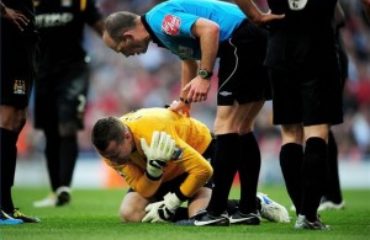Drop foot is the general term used to describe the difficulty in lifting the front part of the foot. This results in dragging of the foot on the ground when an affected individual is walking.
Drop foot isn’t a disease but rather a sign of an underlying anatomical, muscular, or neurological condition or problem.
Causes and Risk Factors
Drop foot is caused by paralysis or weakness of the muscles that are involved with lifting the front aspect of the foot and causes of this issue may include:
- Compression of the nerve in the leg that controls the muscles that lift the foot (peroneal nerve) – this is the most common cause of drop foot and the peroneal nerve can also be injured or damaged during knee or hip replacement surgery. Nerve root impingement in the spine and blood supply compromise to the nerves (neuropathy) due to diabetes can also cause drop foot.
- Brain and spinal cord pathology – conditions such as strokes, multiple sclerosis (MS), and amyotrophic lateral sclerosis (ALS) that affect the brain and spinal cord may also cause drop foot.
- Nerve or muscle disorders – inherited diseases such as muscular dystrophy, which causes progressive muscle weakness, can lead to drop foot. Other such conditions may also include Charcot-Marie-Tooth disease and polio.
Risk factors that can lead to drop foot include those that may result in compression of the peroneal nerve and these include:
- Kneeling or squatting for prolonged periods of time, especially in occupations which require such actions.
- Habitually crossing the legs can cause compression of the peroneal nerve high up in the leg.
- Wearing plaster casts that compress just below the knee or enclose the ankle can exert enough pressure on the nerve to cause a drop foot.
Symptoms
The following symptoms are characteristic of drop foot:
- Difficulty in lifting the front part of the foot.
- Dragging the toes or front part of the foot when walking.
- Having to raise the thigh on the affected side when walking.
- Slapping the foot down with each step.
- The skin on top of the toes and the front part of the foot may be numb.
Treatment
The treatment for drop foot will depend on the cause of the problem. If the cause of the issue is managed successfully then the drop foot may improve or even disappear. If the cause of the drop foot cannot be treated then the problem may become permanent.
Drop foot can be treated in the following ways:
- Splints or braces – leg braces for drop foot help to hold the affected limb in a normal position.
- Physical therapy – these healthcare professionals teach affected individuals exercises that help to strengthen the leg muscles and improve and maintain the range of motion in the ankle and knee of the affected side. Stretching exercises are also taught to help prevent stiffness in the heel.
- Nerve stimulation – stimulating the peroneal nerve with an electrical current may help to improve the severity of a drop foot.
If the mentioned therapies are ineffective, the drop foot is acute, and depending on the cause of the problem, surgery on the peroneal nerve may be indicated. If the drop foot is chronic, a fusion of the ankle or foot bones or grafting a functional tendon and muscle to a different part of the foot may have to be performed.


